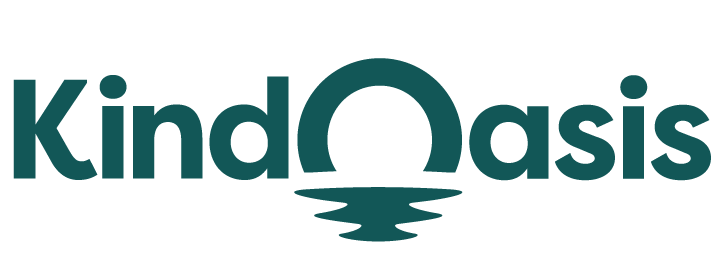How to do AI Chatbot Testing
To effectively test your AI chatbot, follow these steps: First, define clear objectives and scenarios your bot should handle. Use tools like VanChat to simulate real interactions and monitor responses. Test across various devices and platforms for consistency. Collect user feedback to identify areas for improvement. Finally, analyze performance metrics to ensure your chatbot enhances customer experience and supports your ecommerce growth.
Steps to Test Your AI Chatbots
To ensure your AI chatbot effectively supports your ecommerce operations, conducting thorough testing is essential. Let's dive deeper into each step of the testing process.
1. Define Objectives and Scenarios
- Clear Objectives: Start by setting precise goals for what your chatbot should achieve, such as assisting with customer inquiries, processing orders, or providing product recommendations.
- Scenarios: Develop detailed scenarios that your chatbot should handle. For instance, create situations where customers ask about shipping policies or request a product return. This helps in anticipating diverse customer interactions. You can explore agent handover feature for seamless transition in complex scenarios.
2. Simulate Real Interactions
- Tools: Utilize tools like VanChat to mimic real user interactions. These tools help in assessing how your chatbot responds to various inputs and scenarios.
- Monitoring: Regularly monitor and log responses to identify patterns or weaknesses in your bot's interactions.
3. Test for Consistency Across Devices and Platforms
- Device and Platform Diversity: Your AI chatbot should work seamlessly across different devices (e.g., smartphones, tablets, desktops) and platforms (e.g., web, social media).
- Consistency Check: Ensure that the user experience is consistent, regardless of the platform or device used, by conducting tests on each platform individually. Learn about proactive sales to boost interactions across platforms.
4. Collect User Feedback
- Feedback Mechanisms: Implement mechanisms to gather user feedback, such as surveys or feedback buttons within the chatbot interface. This direct input from users is invaluable for identifying areas needing improvement.
- Iterative Improvement: Use feedback to make iterative improvements to your chatbot. This helps in aligning the chatbot's performance with user expectations. Visit our help page for more insights on feedback collection.
5. Analyze Performance Metrics
- Key Metrics: Focus on metrics such as response time, user satisfaction, and resolution rate. These will give insights into how well your chatbot is performing. Get business insights to enhance data analysis.
- Data-Driven Decisions: Use these AI chatbot metrics to make informed decisions about updates or changes necessary to enhance the chatbot's effectiveness.
Useful Tips
- Regular Updates: Continuously update your chatbot's knowledge base to keep it relevant and accurate. Optimize chatbot with knowledge base for best results.
- Scenario Expansion: Periodically expand the scenarios your chatbot can handle as your business and customer needs evolve.
Common Mistakes
- Neglecting Edge Cases: Failing to prepare for uncommon scenarios can lead to poor customer experiences. Always test for edge cases that may arise.
- Ignoring Feedback: Disregarding user feedback can result in a stagnant chatbot that doesn’t meet user needs. Always prioritize user input.
By following these steps and using the right tools, you can ensure your AI chatbot not only meets your business objectives but also enhances the overall customer experience.
Why AI Chatbot Testing is Important
AI chatbot testing is crucial for ensuring seamless customer interactions and enhancing the shopping experience on your Shopify store. Here are some popular use cases:
- Functional Testing: Ensure your chatbot can handle various customer queries, from product inquiries to order tracking. Test different scenarios to verify the bot's ability to provide accurate and relevant responses. Track your orders efficiently.
- Performance Testing: Evaluate the chatbot's response time and ability to handle multiple simultaneous interactions. This ensures your bot can perform well during peak shopping periods. Boost ecommerce customer retention by optimizing performance.
- Usability Testing: Assess the user experience by simulating customer interactions. Check if the chatbot's language and tone align with your brand and if the conversation flow is intuitive. Explore ai recommendation for enhanced usability.
- Integration Testing: Verify that the chatbot integrates seamlessly with other systems, like inventory management or CRM software, ensuring it provides real-time information to customers.
- Security Testing: Test the chatbot's ability to protect customer data and ensure compliance with data protection regulations. This is vital for maintaining customer trust.
- A/B Testing: Experiment with different chatbot scripts or features to determine which versions perform best in engaging customers and driving sales. Learn about proactive sales for effective A/B testing.
By incorporating these testing methods, you can optimize your AI chatbot to better serve your customers and support your e-commerce growth on Shopify.
Useful Statistics for AI Chatbot Testing
When it comes to AI chatbot testing, understanding current trends and statistics can help you make informed decisions and optimize your chatbot's performance. Here are some key statistics to consider:
- High User Expectations: According to a 2023 report by Chatbot Magazine, 85% of consumers expect businesses to offer a seamless experience across all digital channels, including chatbots.
- Why it's useful: This statistic highlights the importance of ensuring your AI chatbot is well-integrated with your other digital platforms. Consistent user experience can significantly enhance customer satisfaction and loyalty, which is crucial for Shopify merchants aiming to retain customers and boost sales.
- Response Time Matters: A study by Juniper Research in 2023 found that 70% of users expect a response from a chatbot within five seconds.
- Why it's useful: This emphasizes the need for efficient response times in your chatbot testing process. Quick responses can lead to higher engagement rates and improved customer satisfaction, which are vital for converting interactions into sales.
- Error Rates and Testing: The same report indicates that chatbots that underwent thorough testing had a 30% lower error rate in interpreting user queries compared to those that did not.
- Why it's useful: This statistic underscores the importance of rigorous testing. Lower error rates mean more accurate responses, leading to better customer experiences and fewer frustrations, ultimately enhancing your brand's reputation and increasing conversion rates.
By understanding and applying these statistics in your AI chatbot testing process, you can ensure your chatbot is not only meeting but exceeding customer expectations, driving better business outcomes for your Shopify store.
FAQ
What is AI Chatbot Testing?+
AI Chatbot Testing involves evaluating and optimizing chatbot performance to ensure it effectively understands and responds to user queries. This process includes testing for accuracy, speed, and user satisfaction. Learn about our after-sales support to enhance testing outcomes.
Why is AI Chatbot Testing important for my Shopify store?+
Testing your AI chatbot ensures it delivers a seamless shopping experience, improves customer satisfaction, and increases conversion rates by effectively assisting customers with their queries and purchases. Use chatbot for ecommerce to enhance your store's capabilities.
How can I test the accuracy of my AI chatbot?+
You can test your chatbot's accuracy by using a variety of test cases that simulate real user interactions. This includes checking for correct responses, understanding user intent, and handling unexpected inputs. Implement ai in customer service for increased accuracy.
What tools are available for AI Chatbot Testing?+
There are several tools available for testing AI chatbots, such as Botium, TestMyBot, and Chatbot Testing Frameworks. These tools help automate and streamline the testing process.
How often should I conduct AI Chatbot Testing on my Shopify store?+
Regular testing is crucial to maintain optimal performance. It's recommended to conduct AI Chatbot Testing whenever there are updates to your chatbot's algorithms or when new features are added.
Can AI Chatbot Testing improve customer service on my Shopify store?+
Yes, by ensuring your chatbot is well-tested, you can enhance customer service by providing quick, accurate responses, reducing wait times, and increasing overall customer satisfaction. See our accurate response feature for improved service.
What are common issues found during AI Chatbot Testing?+
Common issues include misunderstanding user intent, incorrect responses, lack of personalization, and failure to handle complex queries. Identifying and resolving these issues is key to improving chatbot performance.
How can I measure the success of my AI Chatbot Testing efforts?+
Success can be measured by tracking key performance indicators such as response accuracy, user engagement rates, customer satisfaction scores, and conversion rates. Regular analysis of these metrics will help refine your chatbot. Explore ai chatbots and sales for more insights.




